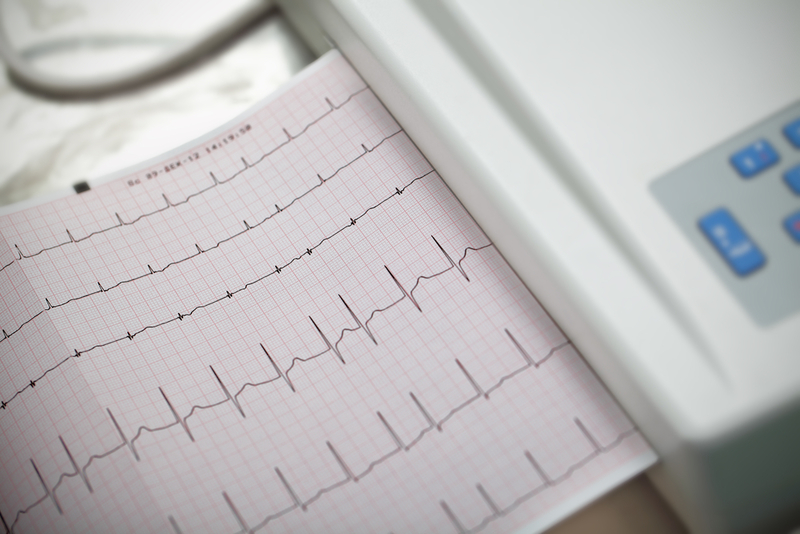Wearable ECG monitor diagnoses AFib better than usual monitoring: JAMA
M3 Global Newsdesk Oct 01, 2018
Using a wearable electrocardiogram (ECG) patch to monitor atrial fibrillation (AFib) significantly improved the diagnosis of AFib compared with conventional monitoring, according to the results of a large clinical trial recently published in JAMA.

Patients monitored with the ECG patch had higher rates of AFib diagnosis and greater initiation of anticoagulants at 1 year, but also increased use of health-care resources, when compared with nonmonitored controls. “Our study shows an almost threefold improvement in the rate of diagnosis of AFib in those actively monitored compared to usual care,” said first author Steven Steinhubl, MD, director of digital medicine, Scripps Translational Science Institute, La Jolla, CA. “Timely diagnosis of AFib more effectively can enable the initiation of effective therapies and help reduce strokes and death.”
In about 20% of patients who have a stroke due to AFib, the AFib wasn’t diagnosed until the stroke or shortly afterward, the researchers noted. However, if AFib is recognized, anticoagulation medication can lead to a 2.7% absolute risk reduction per year for primary prevention in all strokes and an 8.4% reduction per year for secondary prevention, as well as a 0.5% per year absolute risk reduction in mortality. Therefore, better methods to recognize AFib are needed.
This investigation, the mHealth Screening to Prevent Strokes (mSToPS) Trial, included both randomized and observational cohort studies. The randomized group included 2,659 patients (mean age 72.4 years, 38.6% women) of whom 1,738 (65.4%) completed active monitoring using a wireless patch for ECG screening (iRhythm Zio XT patch). Participants were randomized to receive their patch starting within 2 weeks (immediate group) or 4 months later (delayed group). All participants were asked to wear 2 different patches for up to 2 weeks for each patch, each 3 months apart, to evaluate the additional potential benefit of more than 2 weeks of monitoring.
The observational study involved 5,214 patients (mean age 73.7 years, 40.5% women), including 1,738 actively monitored individuals from the randomized trial and 3,476 matched controls.
In the randomized study, new AFib was identified in 3.9% of the immediate group vs 0.9% in the delayed group. In the observational study, AFib was newly diagnosed in 109 actively monitored participants and in 81 unmonitored controls at 1 year.
Active monitoring was associated with increased initiation of anticoagulants (5.7 vs 3.7 per 100 person-years), outpatient cardiology visits (33.5 vs 26.0 per 100 person-years), and primary care visits (83.5 vs 82.6 per 100 person-years). There was no difference in AFib-related emergency department visits and hospitalizations (1.3 vs 1.4 per 100 person-years).
Most individuals who had AFib diagnosed with the ECG patch had a relatively low burden of paroxysmal AFib, and only 4.6% of incident cases were found to have persistent AFib. “These results suggest that spot checking for AFib, whether by a random pulse check for irregularity or obtaining a brief ECG, would likely miss most individuals with undiagnosed AFib,” the authors wrote.
According to Dr. Steinhubl, this is the first study to show the early term clinical consequences of active ECG screening. “This study demonstrates the utility of a digital approach not only to diagnosing asymptomatic AFib, but to the clinical research field as a whole,” he said. “We hope that it will set a precedent for future real-world, participant-centric clinical trials that leverage the power of digital medicine technologies.”
The research was supported by a research grant from Janssen Pharmaceuticals. Additional support was provided by a National Institutes of Health’s National Center for Advancing Translational Sciences grant and a grant from Qualcomm Foundation.
This story is contributed by John Murphy and is a part of our Global Content Initiative, where we feature selected stories from our Global network which we believe would be most useful and informative to our doctor members.
-
Exclusive Write-ups & Webinars by KOLs
-
Daily Quiz by specialty
-
Paid Market Research Surveys
-
Case discussions, News & Journals' summaries